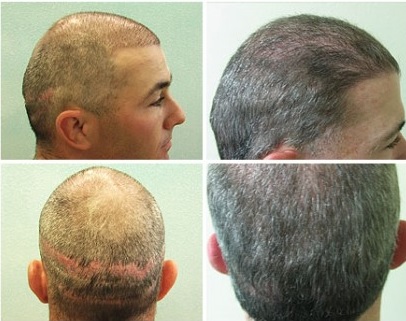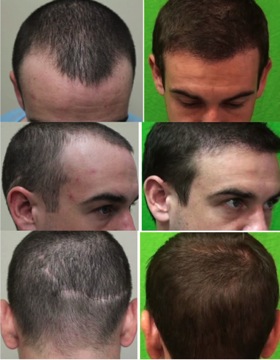Usually when older methods of hair transplantation surgery are used, those current techniques (like strip surgery) are typically performed improperly or, less commonly, with staff assistants that are not certified to do such work. Also, the patients may be poor healers, and scarring may be so excessive that it becomes apparently too visible. The scarring may be due to the hair plug, it may be caused by the height or dejection of grafts, or it may be due to the extended scar in the donor area.
Repairing strip scars from older methods of hair transplantation
Scarring in the donor area, usually being the back of the head, can be totally minimized using Follicular Unit Extraction (FUE) Hair Transplantation. For patients who want to get rid of their strip scar, FUE can be the answer.Dr. Sanusi Umar uses his own method, UGraft advanced FUE. Dr. Umar is known for being the world’s leading FUE hair transplant repair surgeon, and has many cases where repair work is apparent in his work. Dr. Umar is a pioneer of Body Hair Transplantation, which uses hair from different parts of the body as donor areas for hair transplantation.
In one case, Dr. Umar performed a FUE, UGraft procedure on a patient with depleted donor hair due to a previous surgery at another clinic. The patient experienced a NW3 pattern hair loss, and several strip scars were also visible. With his donor limitations he came to Dr. Umar to have non head hair used to restore his loss and camouflage his scars. Dr. Umar used 3,400 grafts from the nape and beard area.
To view a patient video where a strip scar was concealed with FUE grafts, click here.
Repairing strip scars from older methods of hair transplantation – before and after photos


